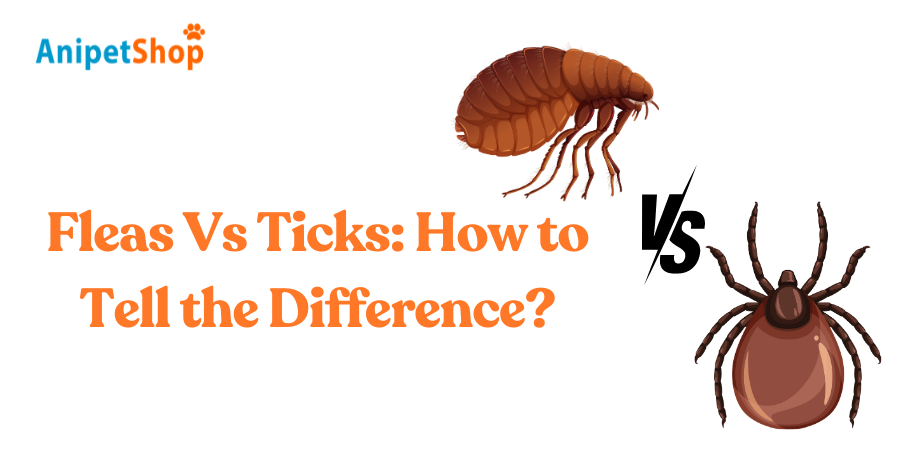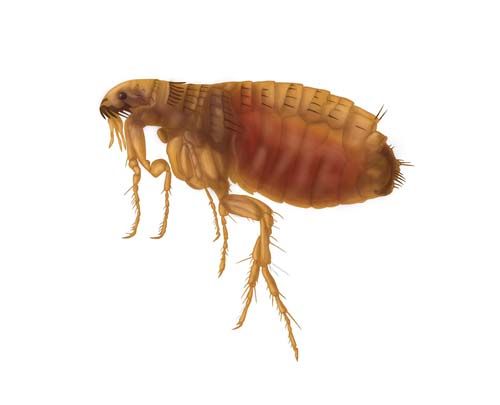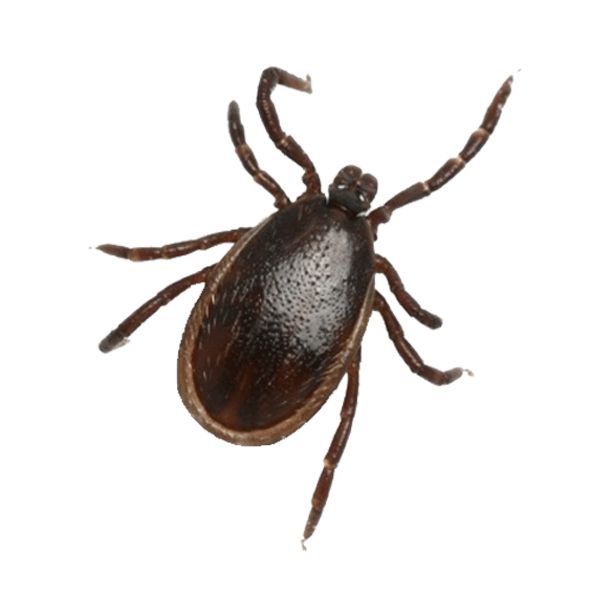Fleas Vs Ticks: How to Tell the Difference?
Fleas and ticks may both be small, but their impact on your pet’s health can be significant. While fleas are fast, tiny jumpers that can infest your home, ticks are slow crawlers that patiently wait to latch onto their host. Both parasites can cause more than just irritating bites—they are known carriers of serious diseases like Lyme disease and Rocky Mountain spotted fever. So how do you know which pest is affecting your furry friend, and what can you do about it? In this article, you’ll discover how to tell the difference between fleas and ticks, their behaviors, and how to effectively protect your pets from these dangerous parasites. Keep reading to arm yourself with the knowledge needed to keep your pet healthy and pest-free!
Key Takeaways:
- Fleas are tiny, fast jumpers that live indoors, while ticks are larger and crawl slowly, usually outdoors.
- Fleas thrive on pets and cause itching; ticks latch onto hosts and may transmit diseases like Lyme disease.
- Fleas multiply quickly indoors, while ticks wait in vegetation to attach to passing hosts.
- Flea infestations spread rapidly; tick bites are less obvious but carry serious health risks.
- Regular inspections, proper treatments, and clean environments help prevent both flea and tick infestations.

Differences between ticks and fleas?
Fleas and ticks may share a parasitic lifestyle, feeding on the blood of animals and humans, but they are distinctly different in appearance and behavior. Fleas are tiny, wingless insects with six legs that thrive on hosts, often causing discomfort and irritation. Ticks, on the other hand, are larger arachnids with eight legs and piercing mouthparts designed to inject saliva into their host’s skin as they feed. Unlike fleas, ticks are known carriers of serious illnesses like Lyme disease, Rocky Mountain spotted fever, and tularemia.
Both parasites rely on their hosts for survival, and their bites can lead to allergic reactions, pain, or disease transmission if untreated. Despite their similar reliance on blood meals, fleas and ticks belong to entirely different species. Recognizing these differences is crucial for effective prevention and protection against these harmful pests.
Size And Appearance
Fleas are generally much smaller, with adult fleas measuring between 1/16” and 1/8” in length—about the size of a pinhead. Due to their tiny size, fleas are often hard to spot with the naked eye and may appear as small brown specks in your pet’s fur, clothing, or bedding. These specks may also be “flea dirt,” which is another term for flea feces. Most details of a flea’s appearance can only be observed under a microscope.
Ticks, on the other hand, are noticeably larger. Adult ticks can grow up to 1/4” in length and are much more visible than fleas. Ticks also expand significantly in size after feeding, sometimes swelling to the size of a grape. Their bodies are usually flat when unfed and can vary in color, ranging from dark brown to reddish, yellowish, grey, or black. As members of the arachnid family, ticks have eight legs, which are often hidden under their round bodies, especially when engorged with blood.


Lifespan
Fleas and ticks have vastly different lifespans, which directly impact their infestation potential and the strategies needed for control. Fleas have a relatively short life cycle, typically lasting just a few weeks. Adult fleas, once they find a suitable host, can survive for about two to three months. During this time, they focus on feeding, reproducing, and laying eggs in the host’s fur or the surrounding environment. This rapid life cycle allows flea populations to grow quickly, leading to infestations that can become overwhelming if not promptly addressed.
Ticks, on the other hand, have a much longer lifespan, often extending over a year or more. Some species of ticks can survive for two to three years in their environment, depending on factors such as food availability and climate. Unlike fleas, ticks are not host-dependent for survival and can endure long periods without feeding, lying dormant until a suitable host passes by. This prolonged lifecycle and patience make ticks particularly persistent pests, capable of causing recurring infestations if not effectively managed.
The stark difference in lifespan underscores the need for tailored prevention measures. Fleas require strategies that disrupt their rapid reproductive cycle, while tick control focuses on long-term management, including environmental precautions and consistent checks for potential hitchhikers.
Movement
Fleas and ticks have distinct ways of moving and finding their hosts, making their detection and prevention unique challenges. Despite lacking wings, fleas are exceptional jumpers, using their powerful legs to leap up to 7 inches vertically and 13 inches horizontally. This remarkable ability allows fleas to move quickly between hosts or from the environment to an animal. Because of their small size, flea infestations often go unnoticed until they reach significant levels, where many small, brown specks (either fleas or flea dirt) are visible on a host, such as a dog or cat.
Ticks, on the other hand, are not jumpers. Instead, they rely on crawling and climbing to reach their hosts. These arachnids exhibit stealthy and patient behavior, often positioning themselves on vegetation, furniture, or other objects. They employ a tactic known as “questing,” where they balance on a surface and extend their legs, waiting for a host to brush past so they can latch on. Ticks are particularly opportunistic and tend to attach when their prey is at its most vulnerable—resting, sleeping, or otherwise immobile. Once attached, ticks feed persistently, often going unnoticed until they’ve had a substantial blood meal.
Here’s a quick comparison of their movement:
| Aspect | Fleas | Ticks |
| Movement Type | Jumping | Crawling |
| Maximum Distance Covered | Up to 7 inches | Depends on host proximity |
| Speed | Very fast due to jumping | Slow, deliberate movement |
| Environmental Influence | Can jump to new hosts quickly | Found in vegetation, waiting for hosts |
Behavior
Fleas and ticks exhibit distinct behavioral patterns that influence how they infest hosts and spread. Fleas are committed parasites that prefer to settle on a single host for the long term. Once they find a warm-blooded animal, fleas spend their lives feeding, sleeping, and reproducing within the safety of the animal’s fur. They consume up to fifteen times their body weight in blood daily, fueling their rapid reproduction cycle. A single female flea can lay up to 50 eggs at a time, leading to exponential population growth. Fleas are primarily an on-pet and indoor infestation issue, as they are introduced into homes via furry hosts and quickly establish themselves in the environment.
Ticks, in contrast, are transient parasites that move from one host to another throughout their lifecycle. After taking a prolonged blood meal from one host, ticks detach, drop to the ground, and enter the next stage of their life. This could involve laying eggs, finding a mate, or waiting patiently for their next host. Ticks are incredibly patient and can survive for months without feeding. They thrive outdoors, often clinging to grass, bushes, or debris where they wait for a potential host to pass by. Unlike fleas, ticks often hitchhike unnoticed on socks, collars, shoes, or even human hair before attaching and feeding. This ability to lie in wait and latch onto unsuspecting hosts makes ticks a significant outdoor hazard for both people and pets.
Understanding these behaviors highlights the unique challenges of controlling and preventing infestations. Fleas require vigilant pet care and indoor management to break their life cycle, while ticks demand outdoor precautions and thorough inspections after exposure to tick-prone environments. Recognizing these differences helps pet owners and individuals take targeted measures to protect themselves and their animals.
Habitat
Fleas are drawn to dark, damp environments, often making their way into your home by hiding in attics, floorboards, and basements. In fact, flea eggs can survive indoors for up to a year, thriving in shaded or grassy areas around the home. Fleas are typically associated with warmer weather, making them more active in the warmer months, though they can still persist indoors year-round if conditions are suitable.
Ticks, on the other hand, are primarily outdoor pests. They prefer warm, wooded, or grassy areas where they can easily find a host. Unlike fleas, ticks can’t jump or fly, so they rely on crawling around their environment until they find a viable host, such as a pet or human. Ticks are often found near bird nests, rat burrows, or other areas where potential hosts gather. While they thrive in warm climates, ticks are also better equipped to survive cold weather, even hiding under snow, which allows them to remain a threat during cooler months.
Climate
Fleas and ticks thrive in different environmental conditions, influencing where they are most likely to be found and how they infest their hosts. Fleas prefer dark, damp, and humid climates, making areas like attics, floorboards, basements, and shaded outdoor spots ideal breeding grounds. Flea eggs are particularly resilient, capable of surviving indoors for up to a year under the right conditions. This adaptability allows fleas to infest homes and remain dormant until they sense vibrations, heat, or carbon dioxide—signals that a host is nearby.
Ticks, on the other hand, are primarily outdoor parasites. They favor warm, wooded, and grassy environments where they can easily access passing hosts. Ticks do not infest indoor spaces like fleas but instead remain in their natural habitats, crawling or lying in wait for potential hosts. Their preference for outdoor climates makes areas such as hiking trails, dense vegetation, and tall grass particularly high-risk zones for ticks.
Understanding these climate preferences helps in implementing effective prevention and control measures. For fleas, focus on maintaining clean indoor environments, reducing humidity, and treating pets to break their life cycle. For ticks, preventive measures such as avoiding heavily wooded areas, using protective gear during outdoor activities, and regularly inspecting pets after walks in tick-prone zones are essential.
Diseases
Fleas and ticks are not only a nuisance but also significant vectors for various diseases that can severely impact the health of your pets. Fleas, in particular, are responsible for causing Flea Allergy Dermatitis (FAD), a condition that leads to intense itching, redness, and skin infections. In addition, fleas can transmit cat-scratch disease and murine typhus, both of which are bacterial infections that can lead to fever, swollen lymph nodes, and fatigue. Furthermore, fleas are known to carry tapeworms, which can be passed to your pet through flea bites, resulting in digestive issues and discomfort.
Ticks, meanwhile, are even more notorious for transmitting a wide range of serious diseases. They are responsible for spreading Lyme disease, which can cause joint pain, lethargy, and more severe complications if left untreated. Ehrlichiosis, babesiosis, anaplasmosis, and Rocky Mountain spotted fever are all tick-borne illnesses that can lead to fever, weight loss, organ failure, and, in some cases, be fatal. Another dangerous disease ticks carry is tularemia, which affects the respiratory system and can cause severe illness in both pets and humans.
Both fleas and ticks pose significant health risks, making prevention and control essential. For fleas, routine flea treatments and environmental management are critical in stopping the spread of these infections, while for ticks, regular tick checks and outdoor precautions are vital in reducing the risk of disease transmission.
Treatment
Dealing with fleas and ticks requires targeted strategies due to their differing lifecycles and behaviors. Fleas, with their rapid reproduction and ability to lay hundreds of eggs in a short period, can be particularly challenging to eradicate. Complete elimination often takes up to 30 days or more because you must disrupt their lifecycle at multiple stages – eggs, larvae, pupae, and adults. This requires a combination of thorough cleaning, pet treatments, and environmental control. Regular vacuuming, washing pet bedding, and using flea control products such as sprays, powders, or foggers can significantly help. Meanwhile, treating your pet with veterinarian-recommended flea preventatives, such as topical solutions or oral medications, ensures ongoing protection.
In contrast, ticks are relatively easier to manage once detected. Removing ticks from pets or humans typically takes only a few minutes with proper tools like fine-tipped tweezers or tick removal devices. After removal, it’s crucial to clean the bite area with an antiseptic and monitor for any signs of infection or disease transmission, such as Lyme disease. To prevent future infestations, inspect your pets and yourself after outdoor activities, especially in wooded or grassy areas. Tick prevention products, like collars or monthly treatments, add an additional layer of protection.
While fleas demand a prolonged and thorough approach to disrupt their lifecycle, ticks can be swiftly addressed if spotted early. However, prevention remains key for both pests, underscoring the importance of maintaining a proactive treatment regimen for your pets and home.
Flea vs Tick Bites
Flea and tick bites differ in how they affect pets, with each carrying specific risks. Flea bites often result in immediate discomfort, causing itchiness and irritation. In some cases, fleas can spread diseases such as bartonellosis and transmit tapeworms to your pet. Fleas can also cause anemia in severe infestations, especially if left untreated. If your pet is bitten by fleas, you may notice the following:
Common Symptoms of Flea Bites:
- Intense itching and scratching
- Red or irritated skin, often caused by scratching
- Scabbing or small raised bumps
- Hair loss, typically around the bite area
- Flea dirt (dark specks of dried blood) around the fur
Ticks, on the other hand, usually go unnoticed at first due to their painless bites. The danger from ticks comes from their ability to transmit serious diseases like Lyme disease, Rocky Mountain spotted fever, and tularemia. These diseases can cause more severe symptoms if not identified early. If your pet is bitten by a tick, symptoms may include:
Common Symptoms of Tick Bites:
- Swollen lymph nodes
- Lethargy or weakness
- Loss of appetite and possible vomiting
- Head shaking or ear irritation
- A red, swollen area around the bite
Both fleas and ticks can carry harmful pathogens, so it’s important to watch for these symptoms and seek veterinary care if you notice anything unusual.

How Can I Prevent Fleas or Ticks?
Preventing fleas and ticks requires a combination of proactive measures both indoors and outdoors to protect your pets, home, and yard.
For fleas, since they can easily infest your pets and home, consider the following steps:
- Regularly wash your pet’s bedding, rugs, and any surfaces where your pets frequently rest.
- Use a flea-repelling product recommended by your veterinarian to keep your pets protected.
- Vacuum your home daily to eliminate fleas that may have found their way onto the floors.
- For severe infestations, consult a pest control company for an inspection and a customized solution.
Ticks, while less likely to infest your home, can become a significant problem in your yard. Here’s how you can reduce their presence:
- Keep your lawn mowed regularly to prevent ticks from hiding in tall grass.
- Remove any large shrubs or piles of leaves, wood, or debris where ticks may hide.
- For persistent issues, reach out to a pest control professional for advice and potential treatments.
When spending time outdoors, you can also reduce the risk of tick bites by:
- Avoiding areas where ticks are commonly found, such as dense brush or wooded regions.
- Wearing long sleeves and pants to protect your skin from tick exposure.
- Using bug repellents containing DEET to ward off ticks.
- After outdoor activities, conduct thorough tick checks on yourself, your pets, and your family to catch any ticks before they can transmit diseases.
For more comprehensive prevention strategies, read our full guide here: https://anipetshop.com/dog-care/preventing-fleas-and-ticks-on-dogs/
Frequently Asked Questions
What Are the Natural Predators of Fleas and Ticks?
Natural predators of fleas and ticks include ants, spiders, and various bird species. These creatures play a vital role in controlling pest populations, helping to maintain a healthy ecosystem. By harnessing their natural hunting instincts, homeowners can effectively reduce flea and tick infestations without relying on harsh chemicals. Utilizing these predators fosters a more balanced environment, promoting a safer space for pets and families alike.
How Do I Safely Remove a Tick From My Skin?
To safely remove a tick, grab fine-tipped tweezers and hold them close to your skin. Pull upward with steady pressure. It’s essential to identify the tick correctly and keep an eye out for any signs of infection at the bite site. To prevent future tick bites, wear protective clothing and use insect repellent. After removal, dispose of the tick by sealing it in a plastic bag to prevent any potential spread of disease. Remember to wash your hands and the bite area thoroughly.
Are There Any Home Remedies Effective Against Fleas and Ticks?
Yes, there are several effective home remedies to combat fleas and ticks. You can utilize essential oils, such as lavender and peppermint, to naturally repel these pests. Herbal remedies, including rosemary and neem, are also potent options. Diatomaceous earth works by dehydrating the insects and can be sprinkled in areas where these pests frequent. A vinegar solution, made from equal parts vinegar and water, can be sprayed on pets and areas of your home to deter fleas and ticks. Additionally, baking soda can be sprinkled on carpets and upholstery to help eliminate any remaining pests. These natural solutions provide a safer alternative to harsh chemicals while effectively managing flea and tick infestations.
Discover more eco-friendly pest control methods for your pets!
Conclusion
In conclusion, protecting your pets from fleas and ticks requires a combination of careful inspection, preventive treatments, and maintaining a clean environment. Both parasites pose unique challenges, but with the right knowledge, you can address and prevent infestations before they become serious. Fleas thrive indoors and multiply quickly, while ticks often hide in outdoor vegetation, patiently waiting for a host. Regularly checking your pet, especially after outdoor activities, and using appropriate treatments can significantly reduce the risk of diseases and discomfort caused by these pests. By taking proactive steps and staying vigilant, you can ensure your pet remains healthy and happy, free from the dangers fleas and ticks bring.
References:
- Durden, L. A., & Hinkle, N. C. (2016). Fleas (Siphonaptera). In Medical and Veterinary Entomology (pp. 100-127). PubMed Central. https://www.ncbi.nlm.nih.gov/pmc/articles/PMC4977707/
- Cornell University College of Veterinary Medicine. (n.d.). Flea and tick prevention. https://www.vet.cornell.edu/departments-centers-and-institutes/riney-canine-health-center/canine-health-information/flea-and-tick-prevention
Lily Watson is an author specializing in veterinary care in Australia. With a profound passion for animal welfare and a solid foundation in veterinary science, Lily has dedicated herself to disseminating valuable knowledge and information for both pet owners and professionals in this field.

